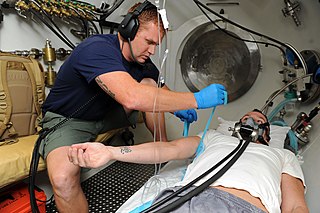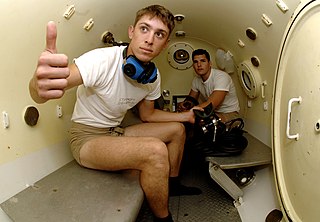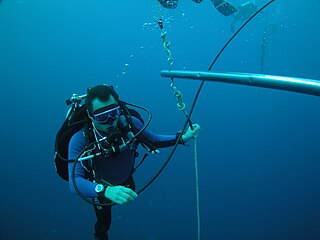Researchers in diving medicine and physiology, including decompression theory
This section needs expansionwith: Researchers not listed here, each with at least one reliable reference.. You can help by adding to it. (October 2022) |
B
- Arthur J. Bachrach – American psychologist and administrator (1923–2011) [2]
- Costantino Balestra – Italian decompression researcher. [3]
- R. Ball [4]
- E. E. P. Barnard [5]
- Bruce Edward Bassett (6 Jul 1935 – 4 May 2002) – USAF decompression researcher [6]
- A. Baz [7]
- Albert R. Behnke – US Navy physician and diving medicine researcher (1903-1992) [8]
- Peter B. Bennett – English medical researcher (1931–2022) (12 June 1931 – 9 August 2022) [9]
- Thomas E. Berghage [10]
- Paul Bert – French zoologist, physiologist and politician (1833–1886) (1833-1886) [11]
- Jef Biard [12]
- Jean-Eric Blatteau – [13]
- George F. Bond – US Navy physician and diving medicine and saturation diving researcher (1915-1983) [14]
- M. Bontoux [15]
- Jolie Bookspan – [16]
- Arthur Edwin Boycott – British scientist (1877-1938) [17]
- Robert Boyle – Anglo-Irish scientist (1627–1691) Relation between pressure and volume in a gas, and the effects of low ambient pressure on animals.
- Alf O. Brubakk – Norwegian decompression researcher (1941–2022) (24 January 1941 – 5 April 2022) [18] [19]
- Albert A. Bühlmann – Swiss physician and decompression researcher (1923–1994) Bühlmann decompression algorithm [20]
- M. E. Burkard [21]
- W. P. Butler [22]
C
D
- Guybon Chesney Castell Damant – English physiologist, diver, royal navy officer, and researcher [17]
- B. G. D'Aoust – US Navy decompression researcher. [23]
- Jefferson C. Davis (decompression researcher) [24]
- Petar J. DeNoble – American decompression researcher.
- Kenneth William Donald – British expert on underwater and exercise physiology. (1911–1994) [25]
- David J. Doolette – American decompression researcher. [26]
- Joel A. Dovenbarger [27]
- R. G. Dunford [23]
E
- Carl Edmonds – Author of diving medicine textbooks [28]
- David Hallen Elliott [19]
F
- Yvon Fauvel [12]
- William Paul Fife – US Air Force officer and hyperbaric medicine researcher (1917-2008) [29]
- Edward T Flynn [30]
- M. Frankenhaeuser Narcotic effects of oxygen at pressure. [31]
G
- Emmanuel Gempp [13]
- Peter Germonpre [32]
- Wayne A. Gerth (c2007) – American decompression researcher. [33]
- Frederick Campbell Golding (4 June 1901 – 17 July 1984) [34] [35]
- Saul Goldman – Decompression researcher. [36]
- Desmond F. Gorman (1988) [37]
- D. J. Graves [38]
H
- John Scott Haldane – British physiologist and decompression researcher (1860–1936), Haldane's decompression model [17]
- Robert William Hamilton Jr. – American physiologist and researcher in hyperbaric physiology. (1930-2011) [19]
- R. A. Hansen [39]
- J. A. Hawkins [39]
- Henry Valence Hempleman – British decompression researcher (1922-2006) [40]
- Tom R. Hennessy (c1988) – British decompression researcher, combined perfusion/diffusion model of the BSAC'88 tables. [40]
- Leonard Erskine Hill – British physiologist and diving physiology researcher (1866-1952) [41]
- Brian Andrew Hills – Physiologist who worked on decompression theory (1934-2006), Thermodynamic model of decompression [42]
- J. Himm [4]
- D. C. Hoffman [43]
- J. How [44]
- Louis D. Homer [30]
- Ernst Felix Immanuel Hoppe-Seyler – German physiologist and chemist (1825–1895)
- Karl E. Huggins – American decompression researcher – American decompression researcher [45]
- J. Hugon [46]
I
- J. Idicula [38]
- Jean-Pierre Imbert – French decompression researcher. [47]
K
- Edmond Kay [48]
- F. J. Keays [49]
- Derek J. Kidd, Canadian decompression researcher, Kidd-stubbs decompression model, DCIEM decompression tables [50]
- Eric P. Kindwall – Decompression sickness treatment researcher. Hyperbaric treatment schedules#Kindwall's monoplace table [7]
- Joseph Kisslo – Research on PFO in divers [51]
- Jacek Kot – Decompression researcher. [52]
L
- Christian J. Lambertsen – American environmental and diving medicine specialist (1917-2011) [38]
- Michael A. Lang environmental physiologist [53] [54]
- Edward H. Lanphier – American decompression researcher. [7]
- G. Lauchner [55]
- David Hugh LeMessurier, Australian decompression researcher. [42]
M
- Alessandro Marroni [56]
- Alfred Le Roy de Méricourt (13 October 1825 – 12 August 1901)
- Simon J. Mitchell – New Zealand physician and author on diving medicine (b1958) [26]
- Charles Momsen – US Navy admiral, submarine rescue (1896–1967) (1896-1967) [57]
- Richard E. Moon [51]
N
- T. S. Neuman [19]
- Ronald Y. Nishi - Canadian decompression researcher [58]
O
P
- Virginie Papadopolou – Decompression researcher [60]
- D. Paris [46]
- E. C. Parker [61]
- W. D. M. Paton [62]
- A. A. Pilmanis - Decompression researcher [63]
- B. Pol [64]
- Neal W. Pollock – Canadian researcher in diving physiology and hyperbaric medicine (1962 - ) [65]
Q
- J. A. Quinn (c1973) [38]
R
- John Rawlins – Royal Navy officer and pioneer in the field of diving medicine (1922-2011)
- Jean-Yves Redureau [12]
S
- V. Schrotter (c1906) [66]
- A. Seireg [7]
- Paul J. Sheffield [24]
- Charles Wesley Shilling – U.S. Navy physician, researcher, and educator (1901-1994) [67] [68]
- Andrew Smith (physiologist) (fl.1873) [69]
- Merrill P. Spencer [48]
- George D. Stillson [70]
- Roy A. Stubbs (c1984) Canadian decompression researcher, Kidd-Stubbs decompressin model, DCIEM decompression tables [50]
- S. S. Survanshi [58]
- H. Swanson [23]
T
- Edward D. Thalmann – American hyperbaric medicine specialist and decompression researcher (1945-2004), Thalmann algorithm [19]
- P. Tikuisis – Decompression researcher [71]
- Jean-Noël Trucco [12]
U
- Donna M. Uguccioni (c1984) Diabetes and diving. [65] [72]
V
- Hugh D. Van Liew – [21] Oxygen window
- Richard D. Vann – American academic and consultant at Divers Alert Network – [33]
- James Vorosmarti Jr [73]
W
- Dennis N. Walder [74]
- T. J. Watelle [64]
- Paul K. Weathersby [30]
- James T. Webb [75]
- R. S. Weaver [50]
- D. West [44]
- Bruce Wienke – American decompression researcher, Reduced gradient bubble model (RGBM) [59]
- Robert D. Workman (physiologist) – American decompression researcher. Concept of M-values, US Navy (1965?) decompression tables. [47] [76]
Y
- O. D. Yarborough (c1937) – US Navy decompression researcher. 1937 US Navy tables, Treatment with hyperbaric oxygen. [77]
- Donald E. Yount – American decompression researcher. Varying Permeability Model [43]
Z
- Nathan Zuntz – German physiologist (1847–1920) (1847-1920) [78] [79]









